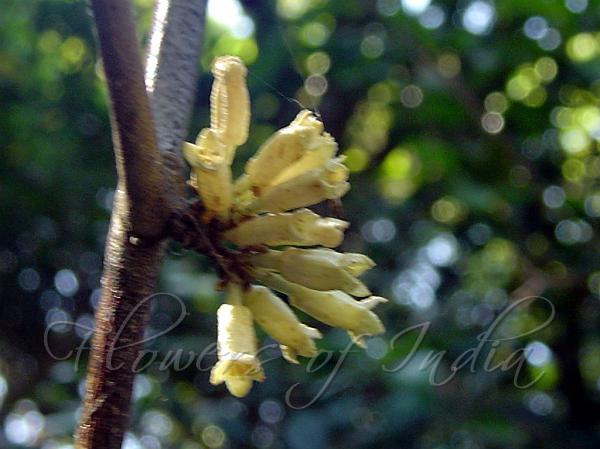|
| South Indian Silverberry |
|

|

| File size | 189291 |
| Original date | 2/24/08 3:32 PM |
| Resolution | 1024 x 768 |
| Flash | Flash did not fire |
| Focal length | 6.3mm |
| Exposure time | 1/50s |
| Aperture | 3.8 |
| Focus Distance | |
| Metering Mode | Spot |
| Camera make | SONY |
| Camera model | DSC-P52 |
| Sensor type |
|
|
|
|
Photo: |
Botanical name: Elaeagnus latifolia Family: Elaeagnaceae (Silverberry family)
Synonyms: Elaeagnus kologa, Elaeagnus arborea, Elaeagnus elliptica
Synonyms: Elaeagnus kologa, Elaeagnus arborea, Elaeagnus elliptica
South Indian Silverberry is a large woody climber with
young stem, leaves below and inflorescence densely scaly with silvery
and coppery scales mixed. It is distinct from the East Himalayan species,
the Eastern Silverberry. The two species can be easily
distinguished by their leaves. Leaves are alternate, 4-8 x 2.5-4 cm,
elliptic oblong, pointed to slightly tapering at tip, narrowed at base,
densely scaly below, sparsely so above when young. Flower racemes are
short, in leaf-axils, 5-7-flowered. Flowers 0.6-0.7 cm across. Perianth
bell-shaped; tube 0.8-1 cm long; lobes 4, 0.2-0.3 cm long, triangular.
Stamens 4, included. Ovary 0.2-0.3 cm long, 1-celled; ovule 1; style
rolled and included, silvery hairy; stigma lateral. Drupe 1-1.5 x 0.8-1
cm, oblong, orange-red on opening. South Indian Silverberry is found in
South India, Sri Lanka, Andaman & Nicobar, and SE Asia. Flowering:
January-February.
| Identification credit: J.M. Garg | Photographed in Maharashtra. |
• Is this flower misidentified? If yes,